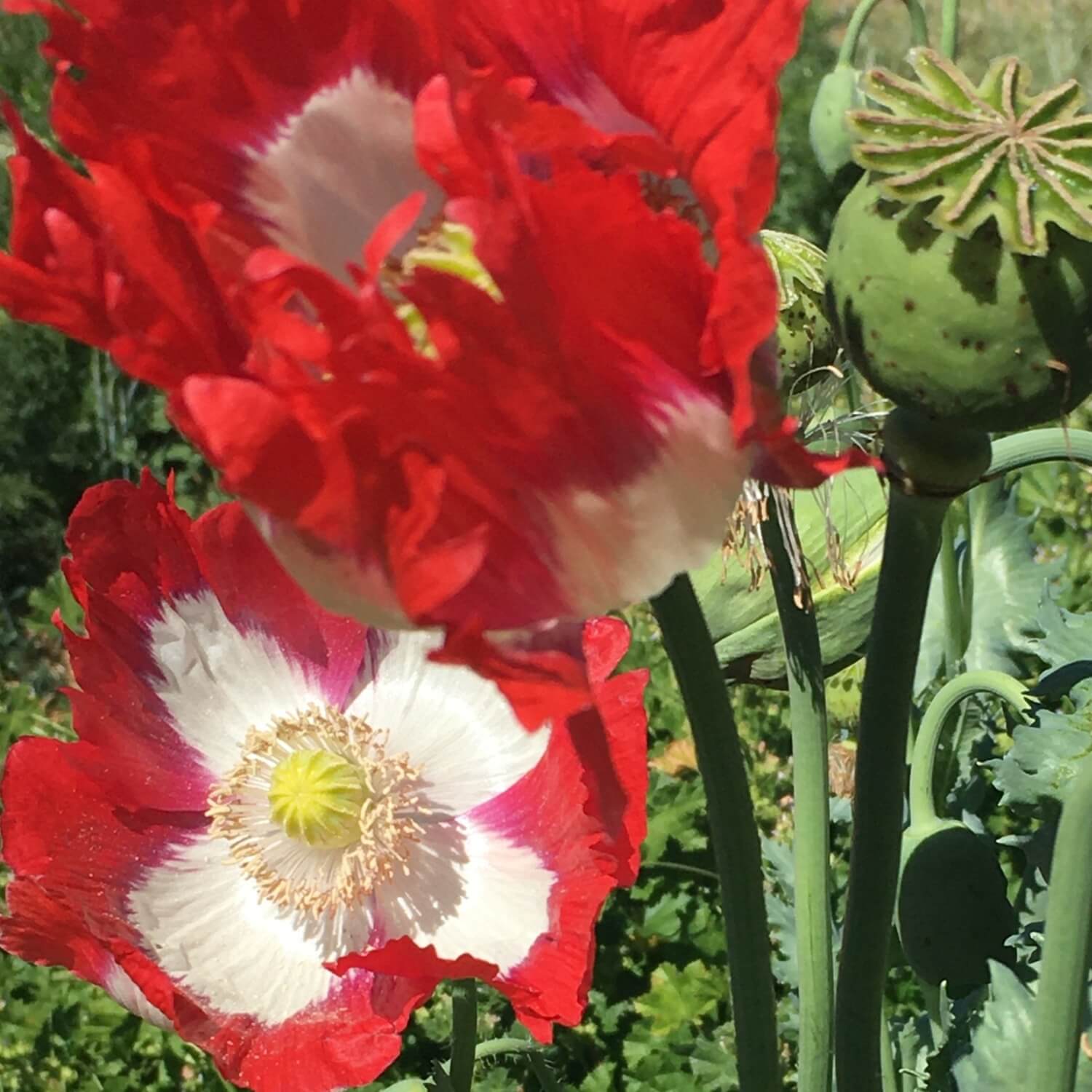Attention Chico and Redding area seed savers! We are teaching a class on saving seeds from your cool weather crops this weekend at the Chico Grange. The class will be held from 1-3 pm on Saturday, June 29th. We will be discussing best practices when saving seeds from Brassicas, Lettuces, Carrots, Beets and more. There will also be a hands on portion of the class where participants will have a chance to winnow brassica and pea seed. I have attached our handout for the class below the flier. This is a free workshop but does require pre-registration at www.cultivatingcommunity.org
Seed Saving: Brassicas and other Winter Crops
With Kalan Redwood and Sasha Illig of Redwood Seeds
info@redwoodseeds.net www.redwoodseeds.net
Botanical Classifications : Genus Species Common Name
Brassica oleracea Broccoli, cabbage, etc.
Flower Structure:
Definitions
Inbreeder- Perfect flowers, self pollinated, 20 plant populations
Outbreeder- Needs insects or wind to pollinate. Larger population needed, 75-100 plants to maintain genetic diversity.
Open Pollinated(OP)- Variety is stable and you can save true to type seeds
Hybrid- Cross between two OP varieties. You cannot save true to type seeds
Heirloom- OP variety that is 40-50 years old
Biennial- Needs period of cold (vernalization) to produce seed. Usually two years.
Annual- Produces seed in one year
Dioecious- Male and female plants
Monoecious- Male and female flowers on same plant
Umbelliferae
Carrot Daucus carrota -Biennial. Outbreeding, insect pollinated. Will cross with Queen Ann’s Lace, Isolation .5 mi, Allow umbels to dry then harvest. Dig roots for selection and replant or store for spring.
Celery Apium graveolens –Biennial, Outbreeding, .5 m isolation, insect pollinated. Very small seed. Dill Anethum graveolens, Parsley Petroselinium crispum, Cilantro Coriandrum sativum- Overwintering annuals, Outbreeder, insect pollinated. Allow to dry in garden
Chenopodaceae
Beet and Chard Beta vulgaris- Biennial, Outbreeder, wind pollinated. Chard and beets will cross with one another. Isolation of .5 miles or more. Dig up beet roots for selection and replanting.
Spinach Spinacea oleraceae- Annual,Dioecious, Outbreeder, wind pollinated. Isolation- 5miles. Really likes cool mild weather, Seed set is day light sensitive, 12-15 hours light will cause plants to bolt. Very fine pollen.
Orach Atriplex hortensis- Annual, Outbreeder, wind pollinated, daylight sensitive
Compositae
Lettuce Lactuca sativa- Overwintering annual, Inbreeder, Flower emerges in one morning and sets seed. Isolation 10 ft. Seeds mature over a 6 week span. Harvest as they mature into bag or cut entire plant when most seeds are mature. Dry process.
Brassicaceae
| Brassica | oleracea | Broccoli, cabbage, brussel sprouts, kale, cauliflower, collards, kohlrabi: (Biennial and mostly self incompatible) |
| juncea | Mustard- Tendergreen mustard, Red Giant mustard, Green Wave Mustard, Indian mustard, mustard greens: (self compatible) | |
| nigra | Black mustard | |
| rapa | Turnips( self incompatible), Raab, Chinese cabbage, Chinese mustard-mizuna, tatsoi, bok choy | |
| napus | Rutabaga, Siberian Kale- Red Russian Kale | |
| Raphanus | sativus | Radish- self incompatible |
| Lepidium | Sativum | Garden Cress |
| Eruca | Sativa | Arugula, Roqette |
Outbreeders, insect pollinated, population 75-100 for good genetic diversity, .5 mile isolation, members of the same species will cross pollinate easily. Allow seed to dry on stalk. Clip stalks and crush pods to release seeds. Winnow to clean.
Leguminosae
Peas Pisum sativum- Annual, inbreeder- most flowers are pollinated before they open, isolation 10ft, allow peas to dry on vines, thresh and winnow, pea weevils are prolific in our region. Freezing for 4-5 days kills weevils. Be sure seeds are dry before freezing.
Store seeds in a cool, dry and dark location. Be sure your seeds are fully dry before storage.







